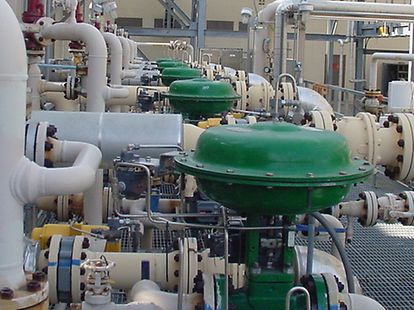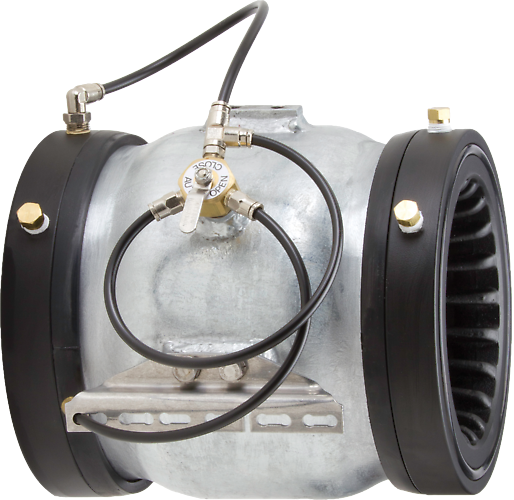Selecting the Right Control Valves: A Guide to Ideal System Efficiency
Selecting the Right Control Valves: A Guide to Ideal System Efficiency
Blog Article

Maximize Energy Cost Savings and Comfort With Advanced Structure Automation Controls
In the world of modern-day style and center administration, the assimilation of sophisticated building automation regulates stands as a crucial innovation. By taking advantage of the power of automation, structures can adapt, react, and progress in methods that were as soon as inconceivable.
Power Efficiency Perks
Energy efficiency benefits can significantly decrease power intake and operational costs in buildings. By applying energy-efficient techniques and technologies, structure proprietors and operators can attain substantial cost savings while also adding to environmental sustainability. Among the main benefits of enhancing energy efficiency in structures is the decrease of energy costs. Energy-efficient systems, such as sophisticated building automation controls, can enhance the use of resources like air conditioning, heating, and illumination, leading to lower energy costs with time.
Additionally, improved energy performance can extend the lifespan of structure devices and systems. By operating extra effectively, cooling and heating systems, light, and other building elements experience less damage, causing lowered maintenance and substitute expenses. Additionally, energy-efficient structures typically command greater residential or commercial property values and rental prices, offering lasting monetary benefits to proprietors.
Additionally, power effectiveness can improve resident convenience and efficiency. Properly managed indoor environments with optimum illumination and thermal conditions develop a more helpful and pleasurable work area, leading to improved staff member complete satisfaction and performance. On the whole, the power efficiency advantages connected with innovative building automation controls are complex, incorporating expense savings, ecological stewardship, and occupant wellness.
Boosted Comfort Control
Enhancing convenience control in structure settings calls for a sophisticated integration of innovative automation systems for optimum owner wellness. By using sophisticated building automation controls, centers can customize the indoor environment to fulfill the certain requirements and preferences of owners. control valves.
By including these advanced controls, structures can not just improve convenience but likewise boost energy effectiveness by optimizing system operations based on real occupancy and use patterns. Inevitably, prioritizing owner comfort with advanced automation systems leads to a much more pleasurable and much healthier indoor environment.
Functional Efficiency Improvements

Furthermore, the execution of real-time monitoring and analytics devices allows building drivers to identify power inefficiencies and functional anomalies immediately. By continuously monitoring power usage patterns and system efficiency metrics, modifications can be made in real-time to maximize power usage and make certain peak operational performance. control valves. Additionally, integrating need reaction approaches into structure automation controls can even more Website boost operational performance by dynamically adjusting energy usage based upon grid conditions and prices signals
Indoor Climate Optimization
Effective interior climate optimization is a basic aspect of structure automation controls, guaranteeing occupants' convenience and health while making best use of energy savings. By using sophisticated sensors and controls, constructing automation systems can constantly readjust and monitor temperature level, moisture levels, air top quality, and air flow to produce an optimum indoor setting. Preserving constant and comfortable problems not just improves passenger fulfillment yet additionally improves efficiency and general well-being.
Interior environment optimization likewise plays a vital function in energy performance. By fine-tuning heating, air flow, and air conditioning systems based on real-time information and tenancy patterns, building automation controls can dramatically minimize power usage - control valves. Implementing strategies such as demand-controlled air flow and thermal zoning can aid minimize energy waste while making certain that each area of the structure obtains the necessary conditioning.

Sustainable Environment Production
Building automation controls not just optimize indoor climate conditions for energy effectiveness and owner comfort but likewise lay the structure for creating a lasting atmosphere through strategic administration of systems and resources. By incorporating innovative building automation innovations, such as sensors, actuators, and smart software program, centers can keep track of and adjust power use in real-time to lessen waste and decrease their carbon footprint. These systems enable look at here predictive maintenance, identifying potential concerns prior to they escalate and maximizing devices performance to boost durability and effectiveness.
Moreover, lasting atmosphere creation expands beyond power administration to encompass water conservation, waste decrease, and indoor air high quality improvement. Structure automation controls can control water usage, detect leakages, and make sure appropriate waste disposal techniques, adding to overall sustainability efforts. Furthermore, by keeping an eye on and regulating air flow and purification systems, these modern technologies improve resident health and performance while reducing energy intake connected with heating and cooling operations.
Conclusion
Finally, progressed building automation regulates offer significant advantages in terms of power cost savings, comfort control, functional efficiency, indoor environment optimization, and developing a lasting environment. By implementing these controls, buildings can accomplish ideal efficiency while reducing energy usage and improving passenger convenience. It appears that the use of innovative automation modern technology is crucial in boosting structure efficiency and developing a much more lasting future.
Power performance advantages can considerably decrease energy usage and functional expenses in structures. Generally, the power performance benefits associated with advanced building automation controls are diverse, incorporating cost financial savings, go to this website environmental stewardship, and passenger well-being.
Furthermore, integrating demand response strategies right into building automation controls can further improve operational performance by dynamically changing power use based on grid problems and rates signals.
Structure automation controls not just enhance indoor climate conditions for power efficiency and occupant comfort yet additionally lay the foundation for creating a sustainable setting with critical administration of sources and systems.In final thought, progressed structure automation regulates offer considerable advantages in terms of energy savings, convenience control, operational effectiveness, interior environment optimization, and developing a sustainable setting.
Report this page